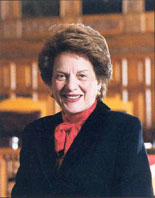 I posted earlier today regarding the new ethics rules regulating attorney advertising in New York, and the prohibition from soliciting clients for 30 days. These Disciplinary Rules that were created by the presiding judges of each of the four appellate divisions not only apply to plaintiffs lawyers but to defendants as well. And to insurance companies. But can the courts legally do that? Part (a) is for plaintiffs, and part (b) is for defendants:
I posted earlier today regarding the new ethics rules regulating attorney advertising in New York, and the prohibition from soliciting clients for 30 days. These Disciplinary Rules that were created by the presiding judges of each of the four appellate divisions not only apply to plaintiffs lawyers but to defendants as well. And to insurance companies. But can the courts legally do that? Part (a) is for plaintiffs, and part (b) is for defendants:
DR 7-111 (22 NYCRR 1200.41-a) Communication After Incidents Involving Personal Injury or Wrongful Death
(a) In the event of an incident involving potential claims for personal injury or wrongful death, no unsolicited communication shall be made to an individual injured in the incident or to a family member or legal representative of such an individual, by a lawyer or law firm, or by any associate, agent, employee or other representative of a lawyer or law firm, seeking to represent the injured individual or legal representative thereof in potential litigation or in a proceeding arising out of the incident before the 30th day after the date of the incident, unless a filing must be made within 30 days of the incident as a legal prerequisite to the particular claim, in which case no unsolicited communication shall be made before the 15th day after the date of the incident.
(b) This provision limiting contact with an injured individual or the legal representative theoreof applies as well to lawyers or law firms or any associate, agent, employee or other representative of a lawyer or law firm who represent actual or potential defendants or entities that may defend and/or indemnify said defendants.
And so an interesting question on the new rules has immediately arisen: Can the New York courts regulate what the insurance companies do?


